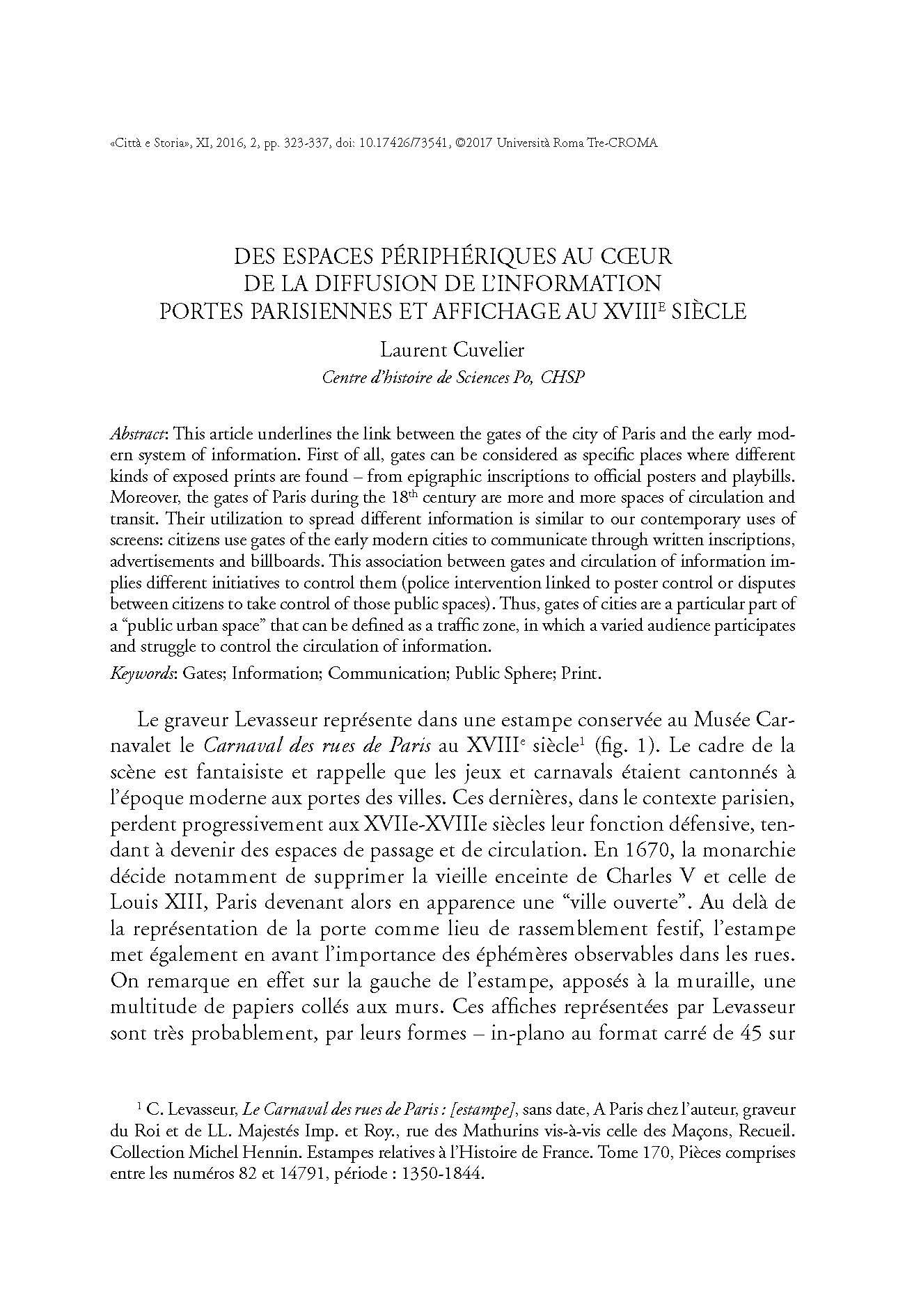Des espaces périphériques au coeur de la diffusion de l’information. Portes parisiennes et affichage au XVIIIe siècle
6,00 €
This article underlines the link between the gates of the city of Paris and the early modern
system of information. First of all, gates can be considered as specific places where different
kinds of exposed prints are found – from epigraphic inscriptions to official posters and playbills.
Moreover, the gates of Paris during the 18th century are more and more spaces of circulation and
transit. Their utilization to spread different information is similar to our contemporary uses of
screens: citizens use gates of the early modern cities to communicate through written inscriptions,
advertisements and billboards. This association between gates and circulation of information implies
different initiatives to control them (police intervention linked to poster control or disputes
between citizens to take control of those public spaces). Thus, gates of cities are a particular part of
a “public urban space” that can be defined as a traffic zone, in which a varied audience participates
and struggle to control the circulation of information.
This article underlines the link between the gates of the city of Paris and the early modern
system of information. First of all, gates can be considered as specific places where different
kinds of exposed prints are found – from epigraphic inscriptions to official posters and playbills.
Moreover, the gates of Paris during the 18th century are more and more spaces of circulation and
transit. Their utilization to spread different information is similar to our contemporary uses of
screens: citizens use gates of the early modern cities to communicate through written inscriptions,
advertisements and billboards. This association between gates and circulation of information implies
different initiatives to control them (police intervention linked to poster control or disputes
between citizens to take control of those public spaces). Thus, gates of cities are a particular part of
a “public urban space” that can be defined as a traffic zone, in which a varied audience participates
and struggle to control the circulation of information.

